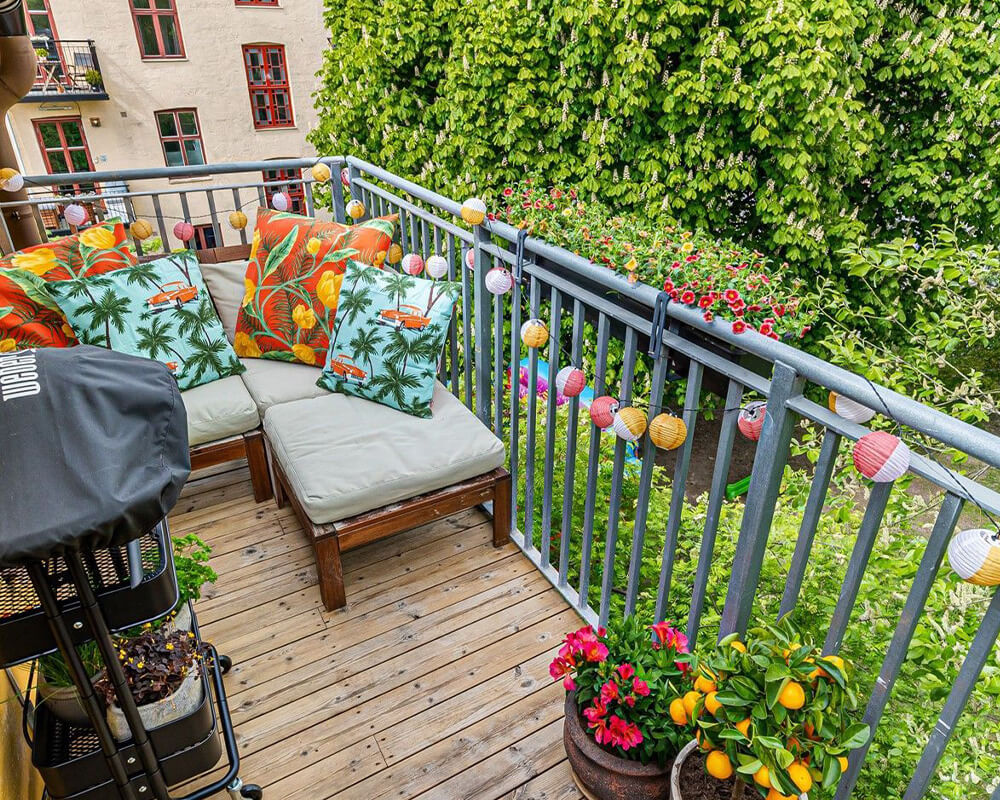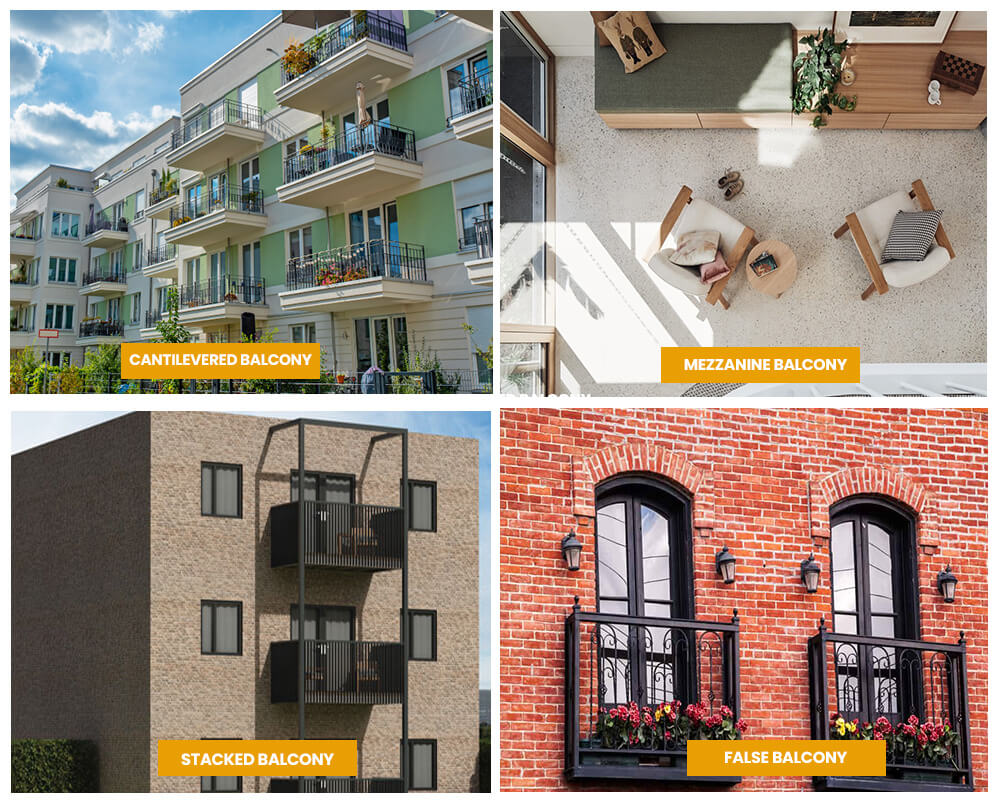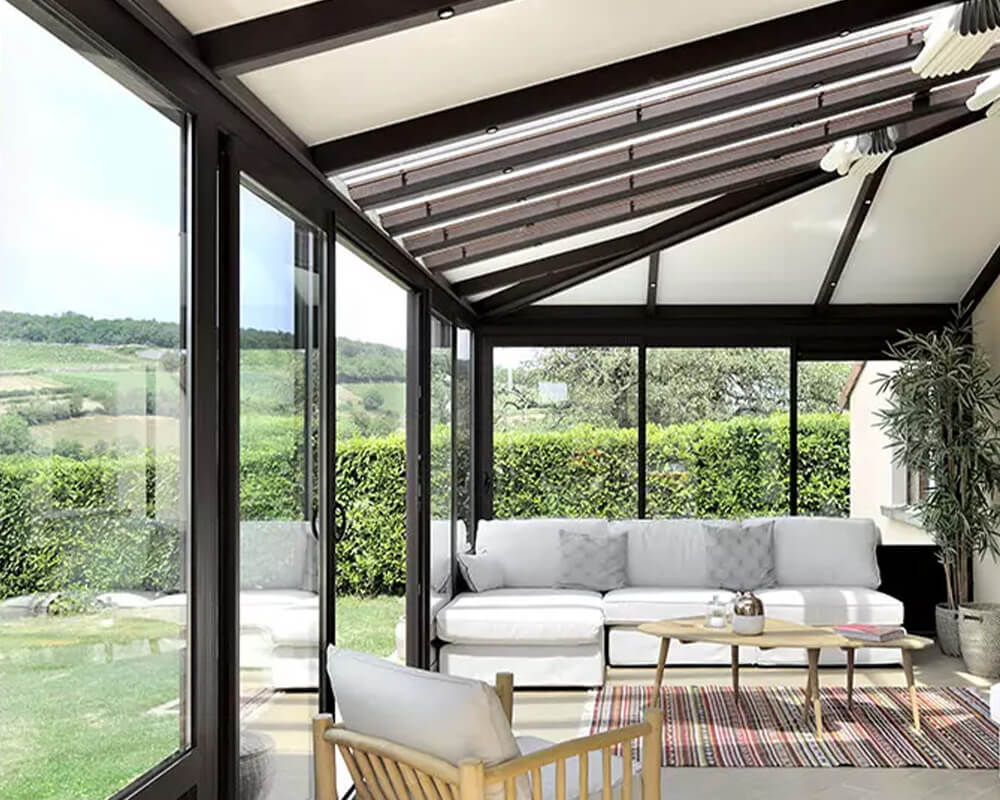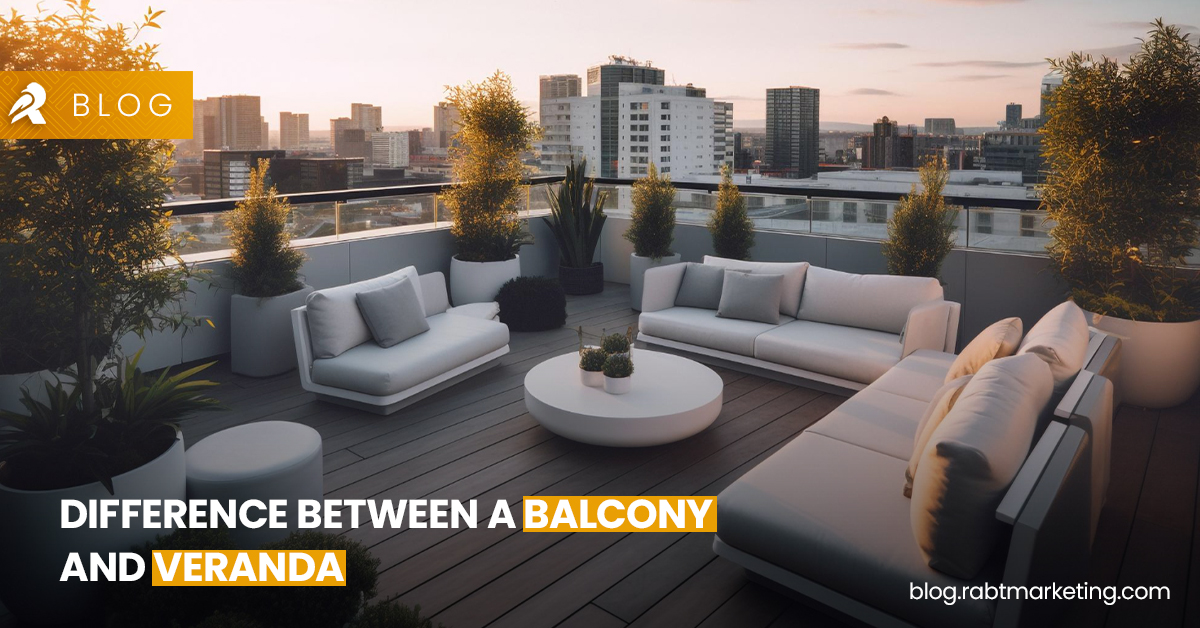An outdoor living space is a great way to enjoy the outdoors and extend your living space. It can be used for dining, recreation, or simply relaxing. Outdoor living spaces can be covered or uncovered, paved with stone, concrete, or brick, and can be attached to the property or freestanding.
Among outdoor living spaces, the terms “balcony” and “veranda” stand out as popular choices. All of them serve to connect indoor and outdoor living, but each has unique characteristics that make it stand out. Let’s take a look at the difference between Difference Between Balcony and Veranda.
What is a Balcony?

A balcony is like a raised platform that sticks out from the side of a house or an apartment. It’s held up by supports and has a railing around it. Balconies can be covered by a roof or open to the outside air. People use balconies to enjoy fresh air, pretty views, and fun times without actually leaving their homes. They can also be useful for things like drying clothes or growing plants. Balconies are found in many buildings like houses, apartments, and offices. They can be built from different materials like wood, stone, or metal.
Types of Balconies

False Balcony
A False balcony looks like a balcony but can’t be used like one. It’s just a railing outside a building that gives a balcony appearance. You can only put some plant pots on it because there’s not enough space. Even though it’s not practical, it has a similar design to a real balcony with a railing. People often see these on apartment buildings, but they can also be used on houses.
Cantilevered Balcony
Cantilevered balconies are those cool balconies that stick out from buildings without any visible support underneath. They can be made from different materials like steel or wood. People like these balconies because they look sleek and modern. They don’t have any visible supports, which makes them look like they’re floating. They’re also good for making the most of space in cities where there’s not a lot of room. They’re strong because they’re connected to strong parts inside the building, and they offer nice views and a fancy look.
Mezzanine Balcony
A mezzanine balcony is an indoor balcony with floor and railings typically found in tall houses with multiple floors. It can be used to create a more interesting space and can serve a variety of purposes, such as a reading book, a play area for children, or a place to relax and enjoy the view.
Stacked Balcony
Stacked balconies are pretty straightforward: vertical pillars connect two or more balconies to form a stack. This not only provides a lot of support for each balcony but it also puts minimal strain on the building. In most cases, it’s not even part of the building and is built as a separate structure.
What is Veranda?

A veranda is like a particular outdoor area attached to a house. It’s like a covered porch or patio, and it can be in the front or back of the house. It usually has a railing around it. Sometimes people use different words like “porch,” “balcony,” or “deck” to talk about a veranda, but they’re a bit different from each other.
Types of Verandas
Here are some types of verandas based on how the roof looks.:
Flat Roof Veranda: This is a veranda with a straight and flat roof.
Curved Roof Veranda: This veranda has a roof that is curved or rounded on top.
Gazebo Veranda: A gazebo is a special type of veranda that is like a small, open-sided building. It’s often in gardens and has a roof but no walls.
Sunroof Veranda: This is a veranda with a roof that lets sunlight through. It’s like having a shaded outdoor spot where you can still enjoy the sun.
Gable Roof Veranda: This veranda has a triangular roof with sloping sides, kind of like a house’s roof.
Difference Between Balcony and Veranda
| Features | Balcony | Veranda |
| Location | Elevated platforms that protrude from the upper floors of buildings | Covered outdoor spaces typically attached to the ground floor |
| Size | Smaller in size | Larger than balconies |
| Usage | Enjoying Sunset, Morning cup of tea or coffee, small gatherings | Larger gatherings, having breakfast, lunch or dinner |
| Design | Minimal furniture and decor | More substantial and elaborate furniture and decor |
Location
Balcony: Balconies are elevated platforms that protrude from the upper floors of buildings. They’re typically attached to bedrooms, living rooms, or even suites. This elevation offers captivating views and a sense of privacy.
Veranda: Verandas are spacious, covered outdoor spaces typically attached to the ground floor of a house. They often wrap around the front or sides of a building, offering both shade and a connection to nature.
Size
Balcony: Balconies tend to be smaller in size compared to verandas and patios.
Veranda: They are larger than balconies, providing ample room for outdoor seating, dining, and entertainment
Usage
Balcony: Ideal for individuals seeking a private escape, enjoying a morning cup of coffee while taking in the cityscape, or watching the Sunset without leaving the comfort of their room.
Veranda: Versatile space for various activities, from leisurely afternoon tea to larger gatherings.
Design
Balcony: Due to their relatively smaller size, patios can be creatively designed to complement the architecture of the building. Furniture and decor choices are usually kept minimal due to space constraints.
Veranda: Verandas often showcase intricate design elements that complement the overall aesthetic of the house. Furniture and decor can be more substantial and elaborate, matching the elegant vibe.
Also, Read Our Blog: 16 Simple and Easy Ways to Decorate Your House
FAQs
What is the difference between Balcony and Veranda?
A balcony is a small space that projects from the wall of an apartment or two or more-storey building. A railing or balustrade usually encloses it. A veranda is a roofed porch that projects from the side of a building, often supported by columns. It is usually open on all sides.
What is the difference between Veranda and Patio?
A veranda is a gallery or walkway that is attached to a house or other building, typically having a roof supported by columns. A patio is an open, uncovered or covered outdoor area, typically paved and enclosed by walls or fences.

